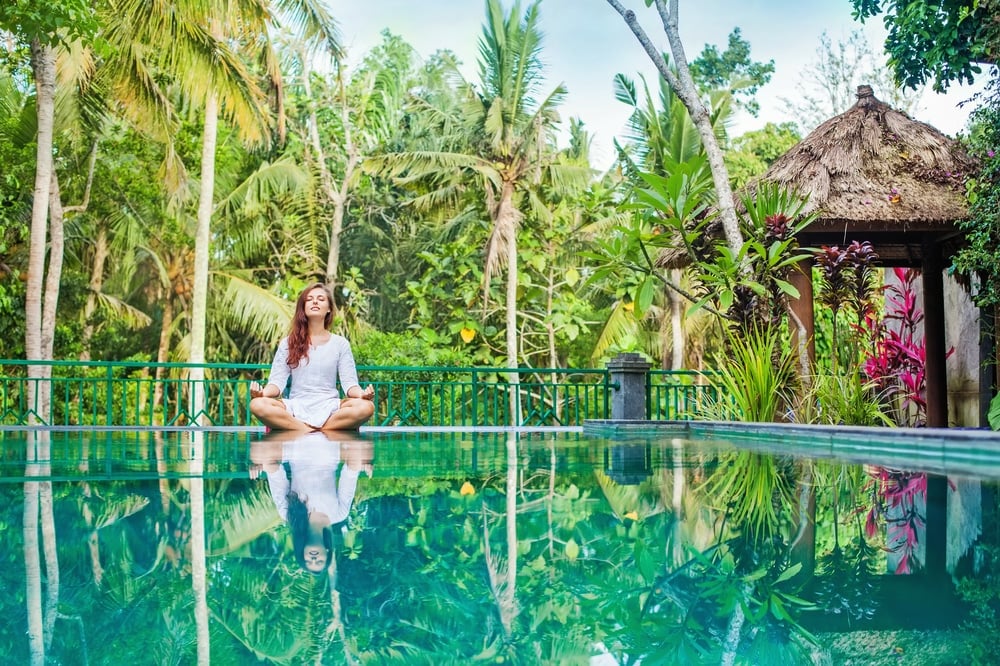A wellness retreat for mental health has never been more important than in today’s busy world. People are searching for places to feel connected, reduce stress, and find clarity. It is pivotal to choose the right retreat when trying to relax, tackle anxiety, or even self-reflect. There are myriad options on offer, and here are ten of the most critical considerations to consider when choosing a personalized health retreat.
- Set Personal Expectations
Before you choose a mental wellness retreat, personal expectations are the first thing that needs to be taken care of. Ask yourself “What do I want to achieve in life? Do I want to heal emotionally? Would I prefer seeking professional help for my existing mental health issues?” Understanding this is crucial to fully maximize a retreat’s opportunities. Not every retreat features yoga, energy healing, or holistic therapy sessions. Having reasonable expectations regarding the kind of practices offered greatly increases the probability of walking away with something valuable.
- Examine the Retreat’s Philosophy and Approach
Each retreat approaches mental well-being differently so choosing one that works best can be vital to one’s recovery. Targeted therapeutic models, spiritual models, or a blend of both can be a focus. Ensure that the philosophy of the retreat aligns with your preferences. For example, if you want to see a therapist conducting evidence-based practices like Cognitive Behavioral Therapy (CBT), then make sure to select retreats that have licensed therapists on staff. Otherwise, consider retreats that provide meditation, energy work, or breathwork sessions if you are more open to spirituality.
- Staff Credentials Should Always be Verified
The effectiveness of the retreat remains relative to how qualified the staff are. It’s important to verify the professional backgrounds and qualifications of facilitators, therapists, or wellness coaches who are spearheading the retreat. Are they licensed professionals, experienced wellness practitioners, or certified in specific therapies? Calm, confident, competent staff can ensure participants’ safety and support through their experience of learning and practicing self-care. Ask questions about their experience and qualifications to be sure the retreat is best suited to you.
- Think About The Setting and Conditions
Where the retreat is held plays an important role in how the participant encounters the experience. If you are still on the fence, think about whether you would like to stay at a pristine beach, a secluded forest, or a mountain. Take time to self-reflect, do you feel more comfortable in a wooded area, near a body of water, or out in an open peaceful countryside? Furthermore, examine the surrounding climate and how easy it is to travel there. A combination of tranquil beauty can catalyze your self-improvement journey by setting the right mood for self-reflection and recovery.
- Look Over the Schedule of Activities and Programs
Retreats can differ in how their programs are set up and the daily activities scheduled. Some facilities with programs scheduled on a timetable have set group sessions, workshops, and even individual therapy time while some allow more free time for participants to think independently. Which schedule do you think would suit your needs best? In the case where you find a schedule helpful, say a retreat with a detailed itinerary would be perfect.
- Group Size and Atmosphere
The number of participants in the retreat can affect its overall experience. Smaller and more intimate groups tend to promote stronger bonds with participants and more engagement with facilitators. If you cherish privacy and prefer personal attention, then a retreat with fewer participants will likely suit you. On the other hand, larger retreats create a sense of togetherness and provide an opportunity to relate with many people. Reflect on the kind of surroundings that will help you feel most relaxed and cared for during your journey to wellness.
- Duration and Commitment Level
Therapeutic mental health retreats can be a weekend trip, a single-week stay, or several weeks. Evaluate what time frame you can afford when planning a retreat and what your goal to achieve by attending it is. Short retreats typically reset a person’s mental state, while longer ones tend to go deeper into more complex issues. Juggling your responsibilities and what is realistic in achieving a mentally beneficial change is crucial to consider. Most importantly, consider how prepared you are to engage in deep, intense emotional work if that is what the retreat demands.
- Cost and Value
Taking care of your mental well-being is important, but before you do, you need to ask yourself what the cost of the retreat will be. Each retreat is different and this could depend on where the retreat is located, how long it lasts, and what services are offered. Look at other areas too, such as does the price include accommodation, meals, therapy sessions, activities, or even extra services. Finding out what fits best for your needs is more beneficial than assuming that the most expensive retreat will work, and the same applies to achieving quality care or hitting personal goals.
- Reviews and Testimonials
Checking what former participants have to say through feedback, reviews, or testimonials is a great way to understand the quality of a retreat. The reviews will help you get an idea about the facilitators, the structure of the program, and the environment as a whole.
You will be able to receive a deeper understanding of the retreat’s advantages or disadvantages through candid reviews. Most importantly, if you have the chance, reach out for comments from other previous participants. Hearing personal experiences can help set realistic expectations for the retreat and assure you that it will live up to your standards.
- Post-Retreat Support and Integration
Retreats do not offer seamless transitions. One challenge resorts face is how to help participants reconnect with their daily lives post-retreat. In addition to the actual retreat, consider the support that is provided once the retreat is over, at what is ordinarily termed as “post-retreat” integration support. Some retreats offer resources for continued growth, such as feedback sessions or online groups. In balance, as much work is done during the retreat, a lot more work is still required for the participants to integrate all their newfound knowledge into their everyday lives. Without integration, any progress made during the retreat gets lost and forgotten.
Conclusion
It cannot be stressed enough that selecting the appropriate retreat is arguably the most important decision one can make in their mental wellness journey. Consideration of the goals to be achieved, the methods used in the retreat, the skill level of the staff, and the setting of the retreat area are crucial components. Before anything, make sure that the retreat you choose provides all the essential basics and support for the journey. Always remember to do a little bit of research and self-reflection so you can trust your choice. Finding the right retreat can provide major shifts in mental and emotional state and improve one’s overall well-being.



